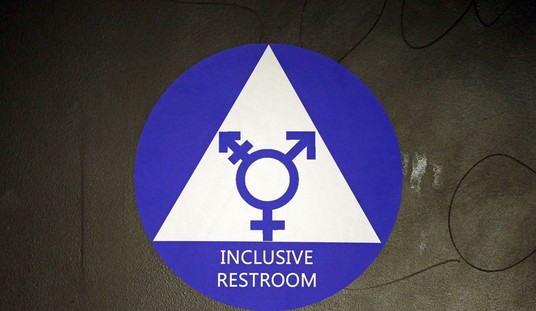I just had a very unpleasant experience – a kidney stone – and one that I hope to help you avoid. The experience is a major health issue for Americans. These cause more than a million visits to health-care providers each year, of which 300,000 are to emergency rooms. If you have ever seen the bill for an emergency room, you know that everything is way more expensive there. Think of this article as not only an attempt to save you great misery, but also to save both public and private funds.
I was in an Enterprise Architecture class (a type of computer geek professional training) on Wednesday, and by the end of the day, I was not just bored; I was in pain in my lower right abdomen. At first I thought that lunch was trying to make an early escape, but a visit to the men’s room didn’t help. And the pain was getting worse – way worse. I was also beginning to get chills. Based on the location I assumed that it was appendicitis, although it certainly came on faster than I would have expected.
I left the class early, intending to drive to my doctor’s office, but in five minutes, the pain had become so intense that I did not think it likely that I would be able to safely drive there. Fortunately, I was a block or two from one of the several excellent hospitals we have in Boise. I had taken my wife to this particular hospital for outpatient shoulder surgery a few weeks ago, so I did not have to think too long about where it was – and with the pain that I was suffering, thinking was not something that I was strong on doing.
I pulled into the emergency room driveway, honked my horn, because I was not sure that I was going to get inside by myself, and within seconds, there was someone there with a wheelchair, and a valet parked my car. By this point, the pain was so intense that I was starting to vomit – and in less than 30 seconds, I was on a bed; within another minute or two, there was a nurse, than a doctor examining me. The doctor asked questions, poked and prodded, and concluded that my problem was probably a kidney stone. While waiting for a CT scan, the nurses inserted an IV, and put in some serious painkillers – and this took it from inexpressible pain to just suffering.
The CT scan confirmed what the doctor guessed: a 7 mm kidney stone at the top of the ureter, the tube that leads from the kidney down to the bladder. A typical adult ureter is 3-4 mm in diameter, so you can see why having a rock lodged there hurts like you can’t believe. Worse, the blockage can lead to urinary tract infections; this is more than just extreme discomfort.
The ER gave me more painkillers, and prescribed Flomax, which relaxes the ureter so that it is a bit larger. Small stones can sometimes pass as the ureter expands, but 7 mm? Not likely — at least not without a lot of time and a lot more painful episodes. The instructions on the discharge paperwork told me to make an appointment with a urologist the following day “without fail!” When I was in having surgery the following day, my wife ended up talking with the wife of another kidney stone sufferer who had delayed calling the urologist – the second visit to the ER in three days finally made him do so.
We are fortunate in Boise that we seem to have lots of doctors relative to the number of patients. While I had to do a bit of calling around, I was able to get scheduled with a urologist Thursday afternoon – and by wild coincidence, the same urologist that treated my daughter’s kidney stone problem a few months before.
Dr. Spencer did the surgery Thursday evening at 6:40 PM. The procedure is a bit horrifying to read about, but I am hoping that it will be an incentive to do what experts recommend to avoid kidney stones, so that you don’t have to go through this. Dr. Spencer ran a stent through my penis, into my bladder, up the ureter to the kidney. With the stent in place, he then inserted a tool (a very small tool) that let him examine the stone, then play Space Invaders inside my kidney, zapping the stone with a laser until it was nothing but tiny fragments that would pass easily.
The stent is still in place; after five to seven days, I am supposed to smoothly pull this stent out at home. The pharmacist who filled the prescriptions for after-surgical drugs has personal experience with this: he says plan on taking two of the controlled substance painkillers before trying this. In the meantime, there is a piece of plastic sticking out of my more manly parts, and urination stings a bit, because the stent is irritating everything. Are you scared enough yet of all this to pay attention to how to avoid this?
There are four different kinds of kidney stones: calcium, uric acid, struvite, and cysteine. There are both dietary and hereditary causes, but the one dietary solution the National Institute of Health promotes is more fluids: “Drinking enough fluids each day is the best way to help prevent most types of kidney stones. Health care providers recommend that a person drink 2 to 3 liters of fluid a day. People with cystine stones may need to drink even more. Though water is best, other fluids may also help prevent kidney stones, such as citrus drinks.”
During the consultation, my urologist observed, “It’s raining stones!” He was awash in patients with kidney stones, perhaps because of the sudden onset of hot weather here in Boise dehydrating people. Even during normal weather here in the intermountain West, it is surprisingly easy to not get enough fluids. Yes, it is a bit of a nuisance to drink enough water. But trust me: you don’t want a kidney stone, nor do you want to go through this surgery.
****
images courtesy shutterstock / Sebastian Kaulitzki / Africa Studio / remik44992










Join the conversation as a VIP Member